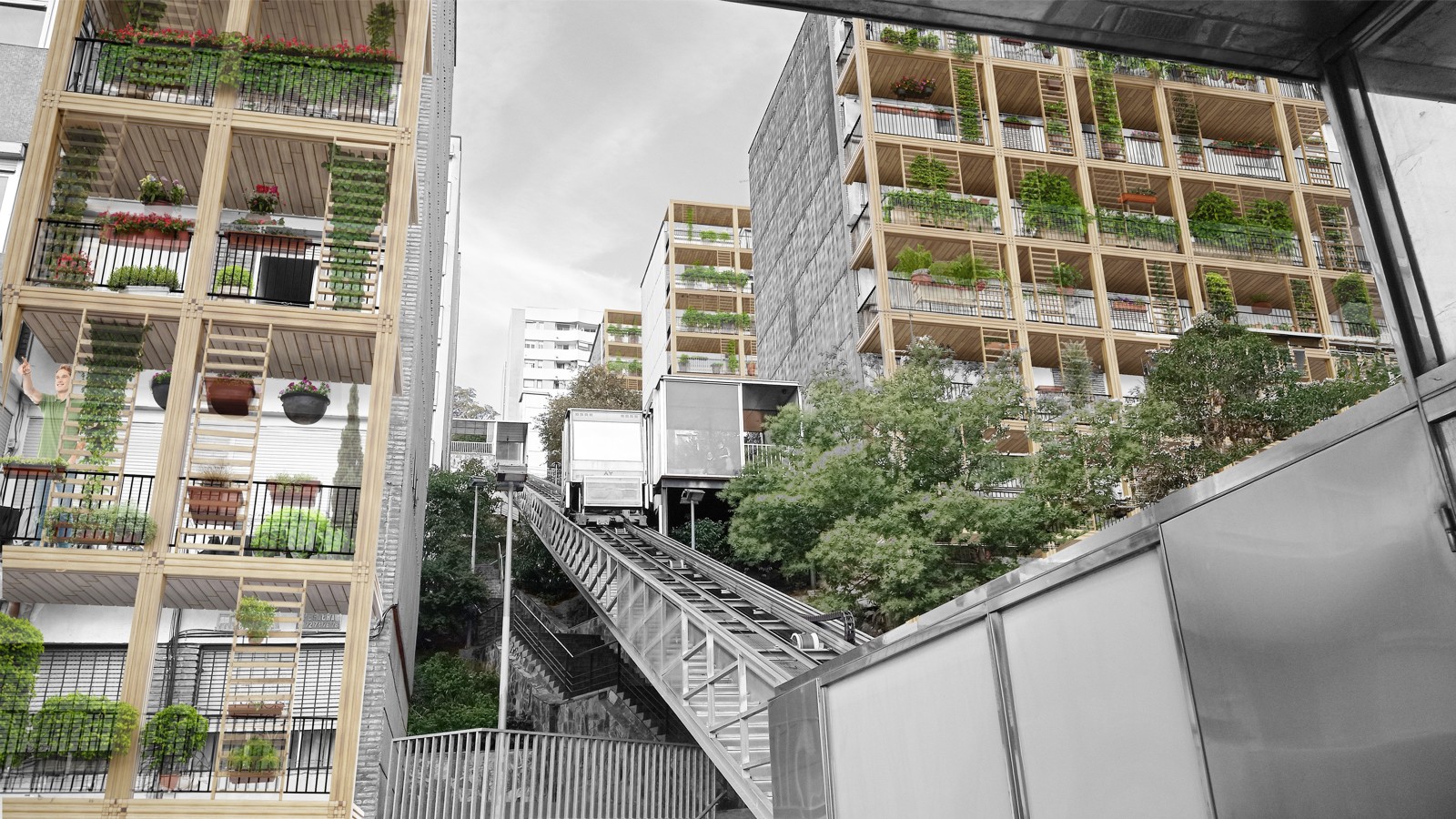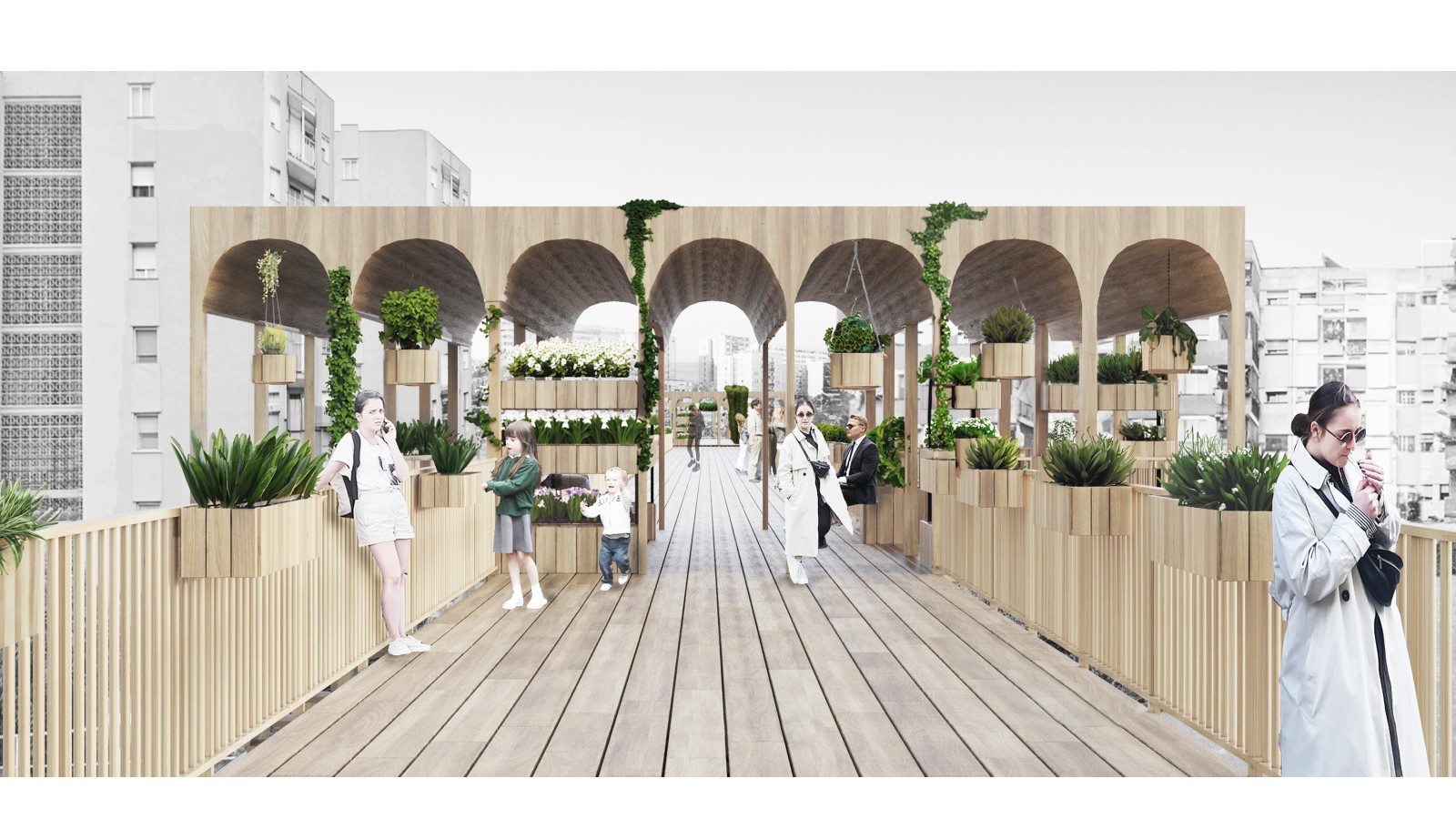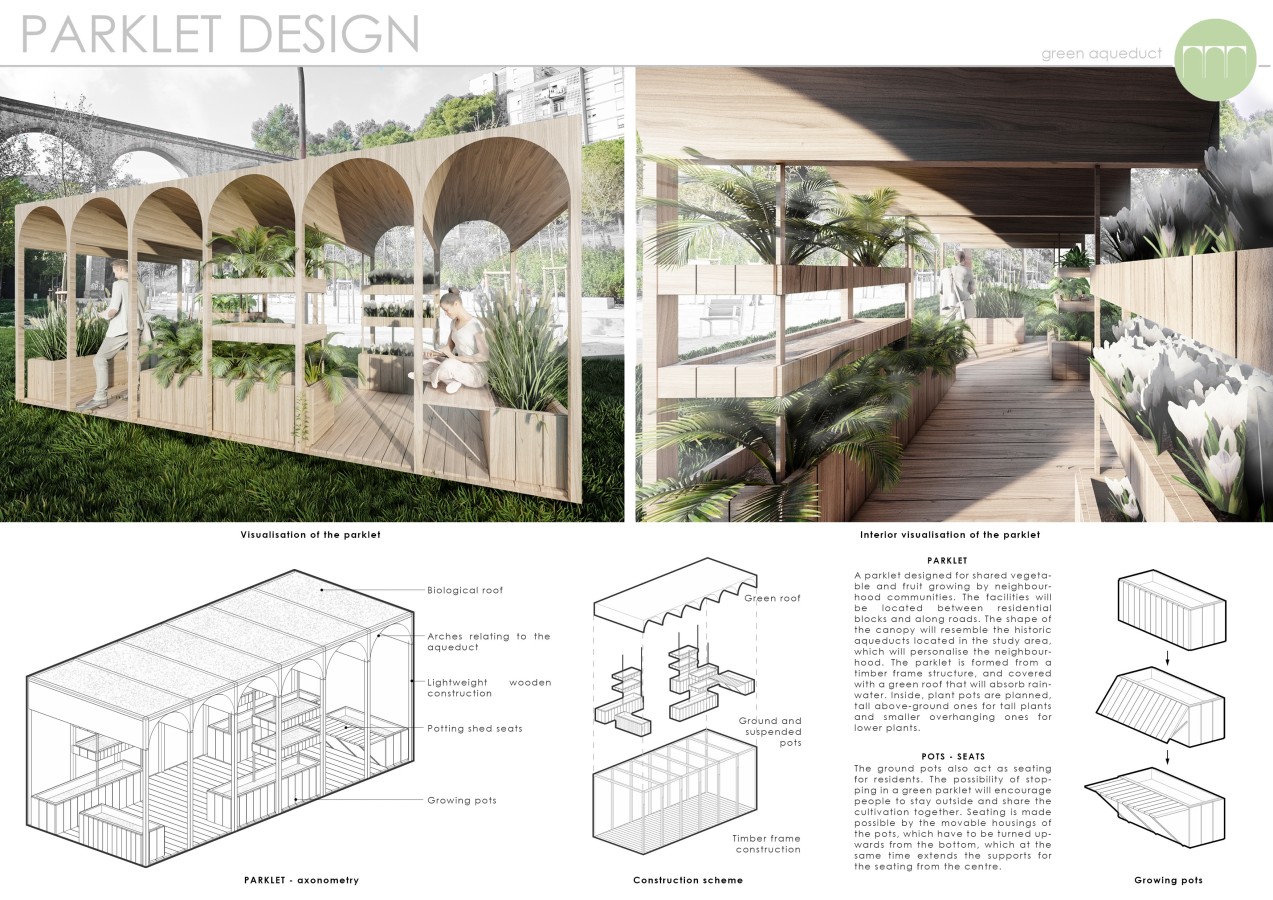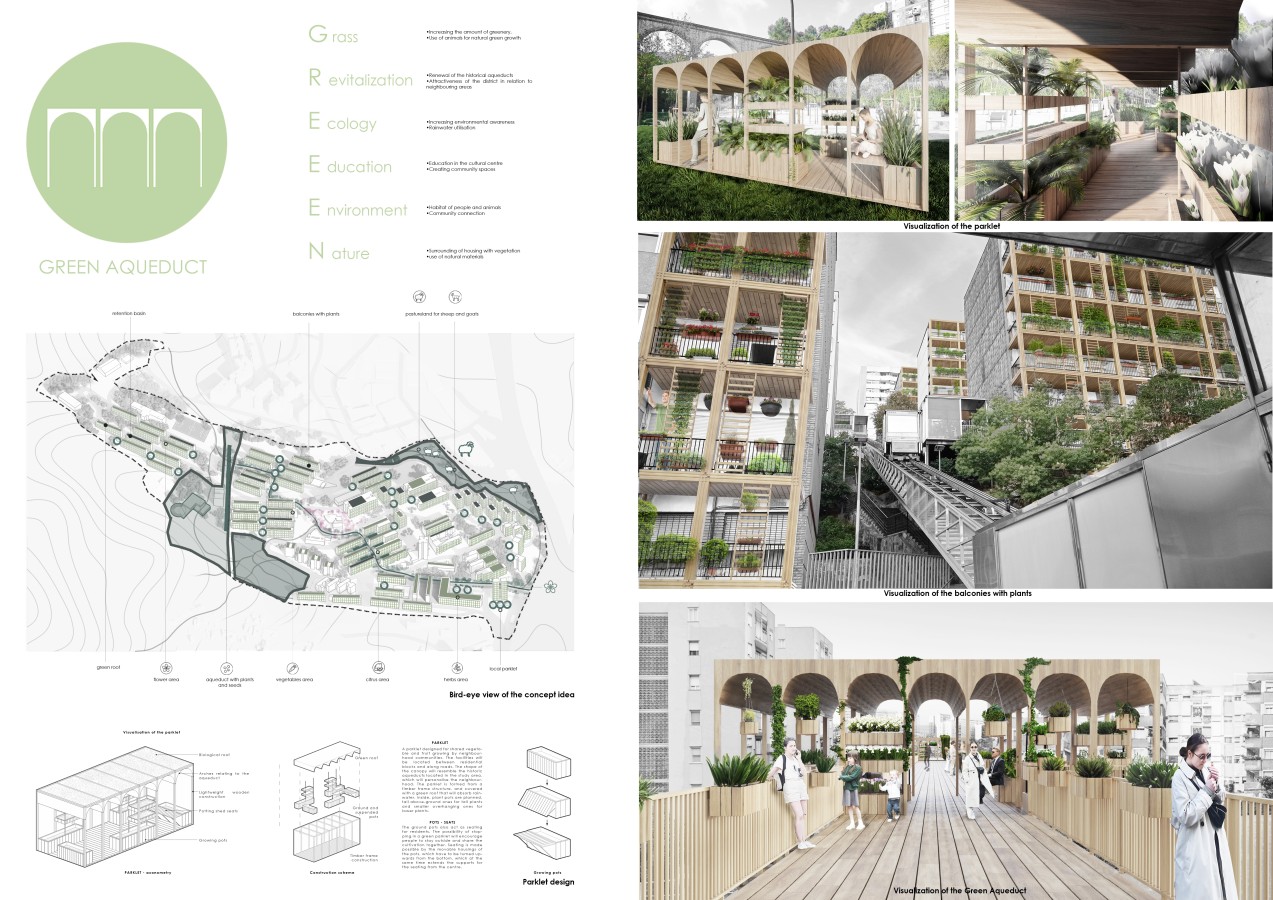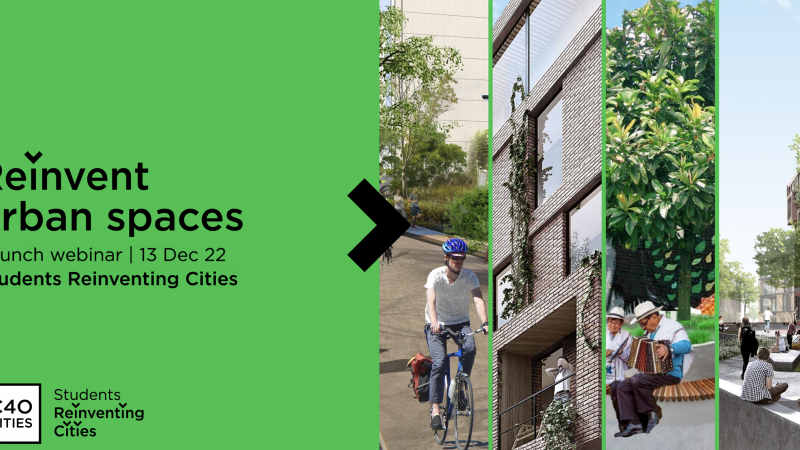Winning Team: Bakers
Team members: Sebastian Kawalec & Michał Wąsik - Politechnika Wrocławska
External advisors: Dr Marzena Heliak-Rużyła (PhD and Assistant Professor in Urban Design and Architecture - Politechnika Wrocławska)
The winning proposal by Bakers Team reimagines the Ciutat Meridiana neighbourhood in a comprehensive way and proposes real solutions at different scales, addressing social, economic, architectural and environmental issues. The project specifically focuses on the following solutions:
- Recovering the old aqueduct as an important identity element of the neighbourhood.
- Connecting the aqueduct to the train station, linking it to the rest of the city by means of a pedestrian walkway and green corridor.
- Creating a community centre that brings together environmental conservation activities, and community gardening management
- Prioritising residents’ homes by installing architecture that provides better insulation and soundproofing.
Special Mention | Team Lajuvenut
Team members: Laura Almiñana Mestres, Judith Fernández Gran & Verónica Cruz Chauca - Universitat de Barcelona & Universitat Politècnica de Catalunya (UPC)
Faculty Advisor: Dr. Alexandre Peñalver i Cabré | Professor titular de Dret Administratiu, Universitat de Barcelona
Special Mention | Team Little Cinders
Team members: Atefeh Gol Mohammadi & Golnar Hekmatfar - Sapienza University of Rome
Faculty Advisor: Dr Mosè Ricci | Professor of Planning, Design & Architecture Technology, Sapienza University of Rome.
The site is located on the outskirts of the city, bordering the Serra de Collserola Natural Park, the Torre Baró and Vallbona neighbourhoods as well as the municipality of Montcada i Reixac. The area is mainly residential, but the topography at the base of the mountain has had a significant impact on the neighbourhood's layout, accessibility, and mobility.
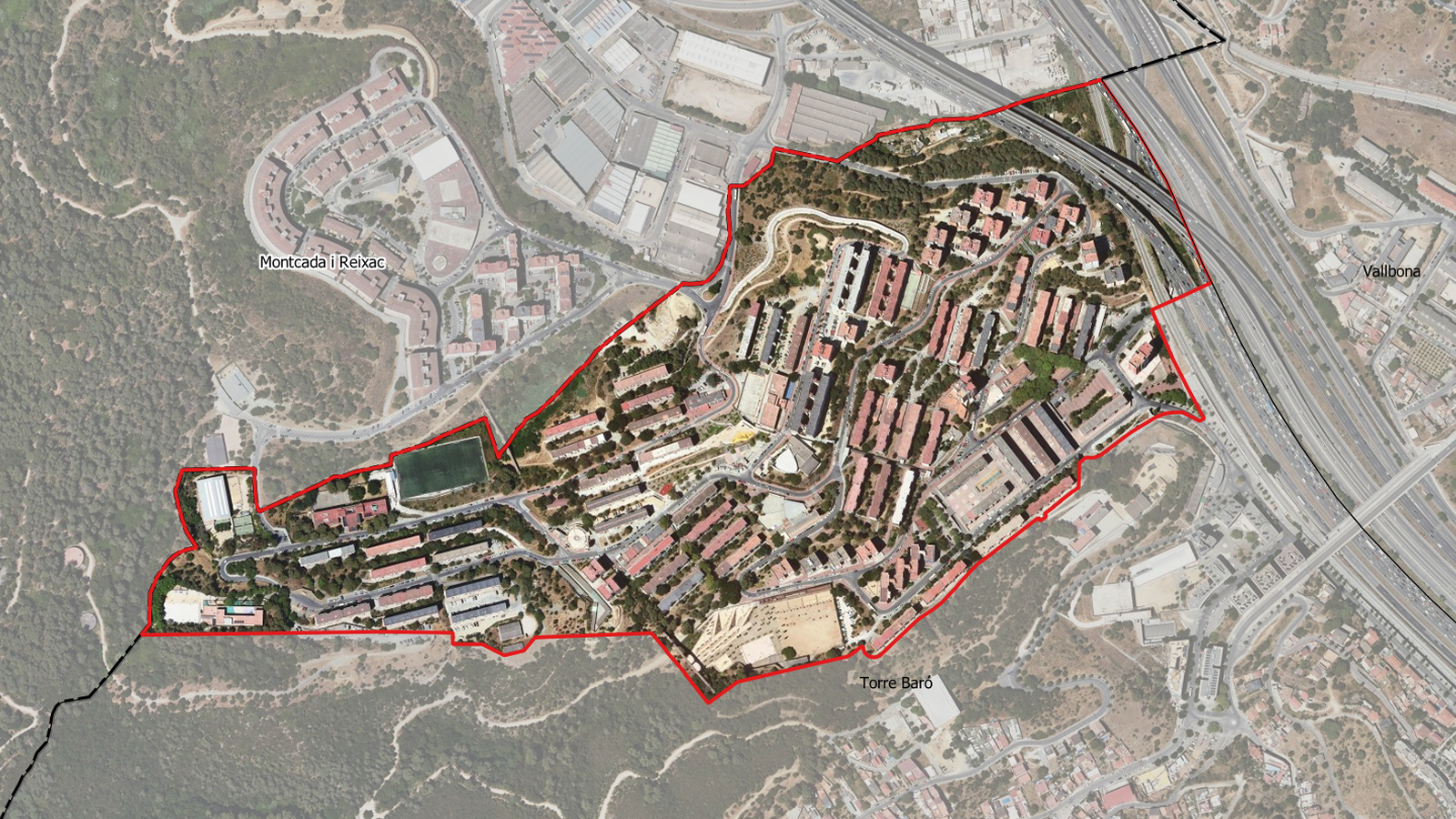
During the period of highest migration to Barcelona (between 1952 and 1975), mass housing estates were constructed across different geographies, with Ciutat Meridiana being constructed in 1963. These large housing estates standardised this type of urban model given that it was extremely economically efficient. This led to a repeated composition of isolated blocks with large spaces between them allocated for green areas. However, the city's geography disconnected these neighbourhoods from the rest of the city, leaving them lacking amenities and shared infrastructure, and without clearly defined public spaces.
Social and economic quality indicators have revealed significant inequalities in the neighbourhood, such as high unemployment rates, low levels of education, low family income, housing insecurity and a lack of open spaces. Students should therefore consider ideas that will promote a more inclusive and diverse city to tackle social segregation and the environmental, economic and energy crisis.
Proposals should develop specific strategies that will strengthen the community and regenerate Ciutat Meridiana into a more multifunctional neighbourhood, repairing the issues created by the way in which the neighbourhood was originally constructed.
Approx. site area
35.5 hectares
Key Information
The area has 11,152 inhabitants. 33.3% of its population is foreign, with 7.8% having a university education and 12% of the working-age population unemployed (July 2022).
Priority areas & main expectations
The project should develop strategies that focus on the following areas:
- Multi-functional uses of space using solutions that boost the local economy
- Generating local employment through plans that fill currently empty sites with local businesses and services
- Better integrating the community, the neighbourhood and the Collserola Natural Park into the rest of the city
- Improving physical, environmental and social accessibility to spaces
- Enhancing the environmental and functional use of urban spaces and the gaps between buildings
- Boosting community engagement and bringing the community together
Jury members that assessed all submitted proposals and selected the winner included:
- Aida Mas Baghaie, Senior Manager of Thriving Cities Initiative | C40 Cities
- Laia Grau Balagueró, Urban Planning Manager | Ajuntament de Barcelona.
- Areti Markopoulou, Academic Director | IAAC Barcelona
- Amadeu Santacana, Architect Project Professor | Escuela Técnica Superior de Arquitectura del Vallès
- Anna Terra Sans, Director General of City Development | Ajuntament de Barcelona


